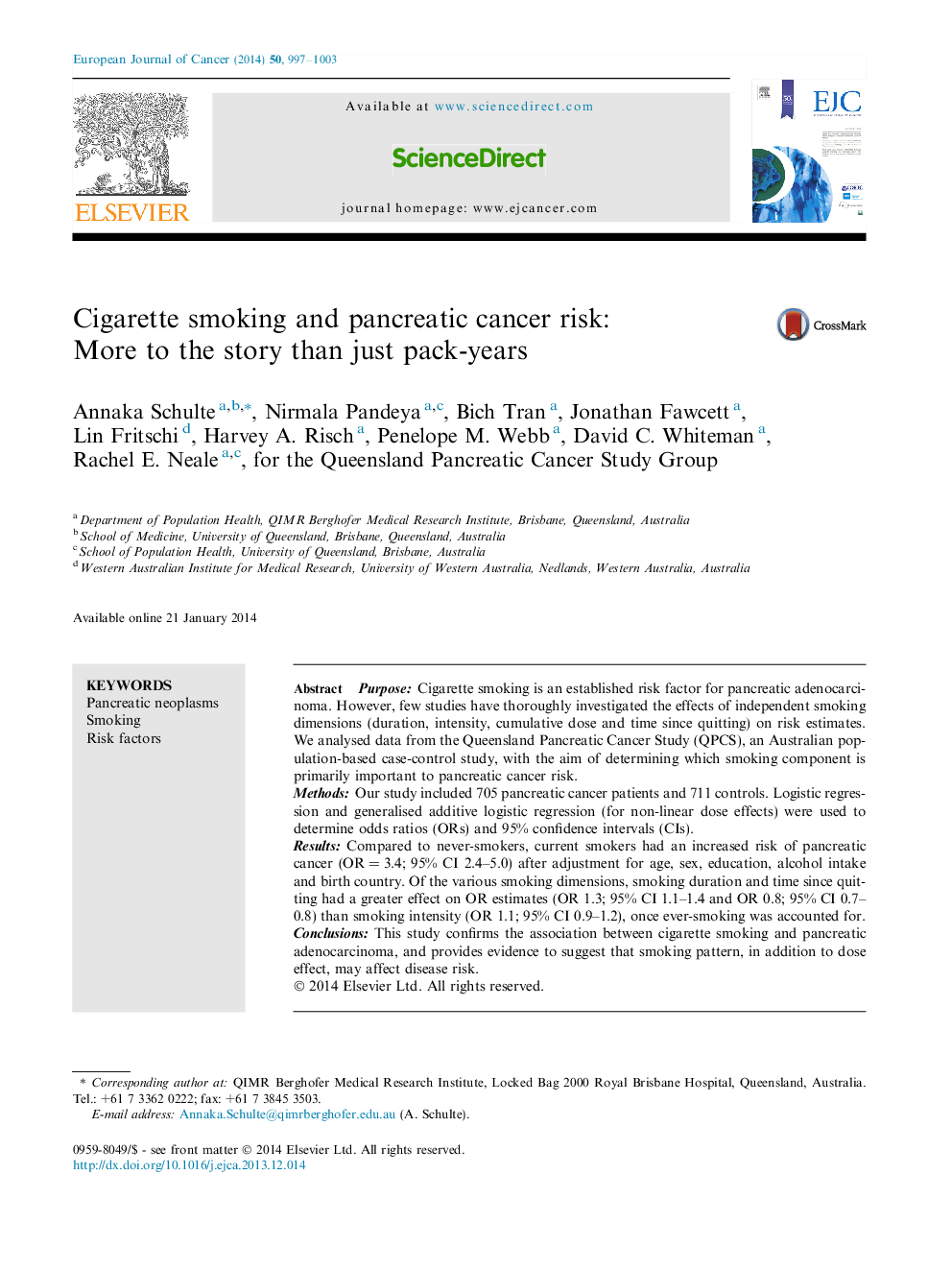| Article ID | Journal | Published Year | Pages | File Type |
|---|---|---|---|---|
| 2122045 | European Journal of Cancer | 2014 | 7 Pages |
PurposeCigarette smoking is an established risk factor for pancreatic adenocarcinoma. However, few studies have thoroughly investigated the effects of independent smoking dimensions (duration, intensity, cumulative dose and time since quitting) on risk estimates. We analysed data from the Queensland Pancreatic Cancer Study (QPCS), an Australian population-based case-control study, with the aim of determining which smoking component is primarily important to pancreatic cancer risk.MethodsOur study included 705 pancreatic cancer patients and 711 controls. Logistic regression and generalised additive logistic regression (for non-linear dose effects) were used to determine odds ratios (ORs) and 95% confidence intervals (CIs).ResultsCompared to never-smokers, current smokers had an increased risk of pancreatic cancer (OR = 3.4; 95% CI 2.4–5.0) after adjustment for age, sex, education, alcohol intake and birth country. Of the various smoking dimensions, smoking duration and time since quitting had a greater effect on OR estimates (OR 1.3; 95% CI 1.1–1.4 and OR 0.8; 95% CI 0.7–0.8) than smoking intensity (OR 1.1; 95% CI 0.9–1.2), once ever-smoking was accounted for.ConclusionsThis study confirms the association between cigarette smoking and pancreatic adenocarcinoma, and provides evidence to suggest that smoking pattern, in addition to dose effect, may affect disease risk.
